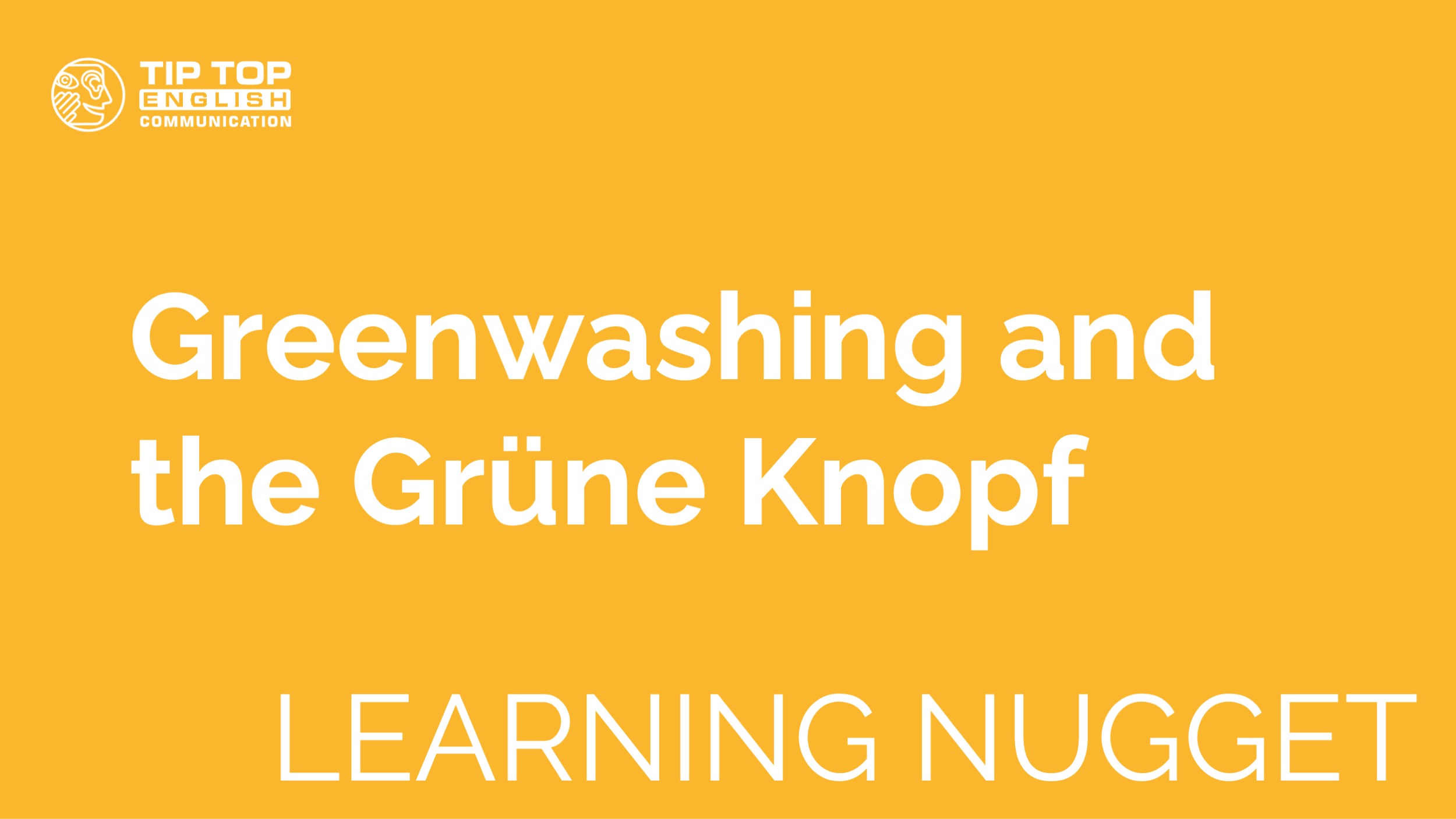Greenwashing and the Grüne Knopf
Recently, the German Federal Development Minister Gerd Müller saw one of his initiatives become reality: the Grüner Knopf. This “Green Button” is a symbol that textile sellers can put on their products once they have been certified to meet standards set by Germany’s federal government. The standards relate to the physical, social, and economic welfare of the workers producing the textiles and the products’ environmental impact.
At first glance, this initiative seems hard to criticize. The Green Button is meant to help consumers more easily make choices that are better for the world. Also, the fact that the certification comes from the government gives it a lot of power and notoriety. More consumers will know about it and look for it, so more businesses will seek to earn it – seemingly a win-win-win for the textile workers, environment, and businesses.
As good as the initiative seems, though, it’s actually getting a lot of criticism. And the loudest objections are coming from groups who support sustainable and socially-responsible textile production. These groups’ objections relate to something called “greenwashing.” In this Learning Nugget, we’ll explore the meaning of that term and why some argue the new Green Button will only make it more common in Germany’s textile industry.
What’s greenwashing?
In a Guardian article on greenwashing there’s a very clear example of what the practice looks like and why it’s done. In the 1980s the energy company Chevron – which deals largely in oil and was one of the worst polluters in the United States at the time – produced a series of ads showing what their company was doing to help the environment. One of those ads featured a butterfly garden the company supported. While the butterfly garden likely cost around five thousand USD per year to keep up, the company spent millions advertising it.
In other words, it appeared that making the world think of Chevron as a company that cared about the environment was far more important than actually protecting the environment at the time. That’s exactly what greenwashing is: A company heavily advertising a small, environmentally friendly initiative to distract people from environmentally damaging aspects of their business practices.
How could the Green Button help companies greenwash?
The main problem critics have with the Green Button certification seems to be that its rules are not strict enough. An article from Die Zeit describes two examples of this.
One is that though workers creating Green Button textiles have to be paid a minimum wage, that minimum wage often still isn’t enough to fully support workers. The article cites an example in Bangladesh where the workers receive a minimum wage of roughly 80 euros per month – enough to earn the Green Button – but would likely need double that to fully support themselves.
The second example is how the Green Button certification process only starts once the fabric is being worked on in factories and not from the very beginning. That means that textiles made from cotton taken from fields where hazardous chemicals and pesticides were used can still earn the Green Button if they are processed in an environmentally friendly way later on.
And how could these factors contribute to corporate greenwashing? Because the Green Button is getting a lot of publicity and its standards are relatively easy to meet, large companies are likely to seek it out. Case in point, Tchibo, Aldi North and South, Lidl, Rewe, and many others are already Green Button certified. These companies can now use their Green Button to advertise how environmentally and worker-friendly their products are, with few consumers understanding that the textiles sold by these companies could still be greatly harming the environment and not providing living wages to the workers producing them.
A hard call
So is the Green Button little more than a way for businesses to seem socially and environmentally responsible without needing to make major changes? The answer, of course, is complicated.
You could argue that if the Green Button makes large companies demand processes that are at least somewhat more environmentally friendly and better for workers, it’s overall a positive thing. However, you could also say that even if it does promote some positive changes, it could make consumers believe their purchases are better for the world than they truly are and make it harder for them to differentiate between Green Button products and those that reach an even higher standard.
Let us know what you think
With the Green Button being so new, it will be a waiting game to see how it affects the textile market or if the government changes standards for the certification based on current criticism. If you have your own thoughts or comments on this issue, we’d love to see them on our link to this Learning Nugget on our Facebook page.
Vocabulary
Federal Development Minister – Bundesminister für Entwicklung
becomes reality – Wirklichkeit werden
textile sellers – Textilwarenverkäufer, Textilanbieter
federal government – Bundesregierung
relate to sth. – etw betreffen
welfare – Wohlfahrt
environmental impact – ökologischen Einfluss
notoriety – Allbekanntheit
seek to earn – danach streben es zu bekommen
objections – Einwände, Beanstandungen
greenwashing – Grünfärberei
bad – worse – worst – schlimm, schlimmer, am schlimmsten
polluters – Verschmutzer
ads – Anzeigen
to distract from – ablenken von
damaging aspects – schädliche Aspekte
minimum wage – Mindestlohn
to cite – anführen, zitieren
receive – erhalten
would likely need – bräuchten wahrscheinlich
to fully support themselves – um sich vollständig selbst zu tragen
once the fabric is being worked on – sobald der Stoff verarbeitet wird
hazardous chemicals and pesticides – gefährliche Chemikalien und Pestizide
contribute to – zu etwas beitragen, etwas beisteuern
easy to meet – leicht zu erfüllen
case in point – typisches Beispiel
greatly harming the environment – sehr der Umwelt schaden
a hard call – eine schwere Entscheidung
differentiate between – differenzieren zwischen
waiting game – Geduldsspiel
to affect – beeinträchtigen
Excite Your Senses

On our YouTube channel, you can follow along as a native speaker reads this month’s Learning Nugget accompanied by music and pictures.
